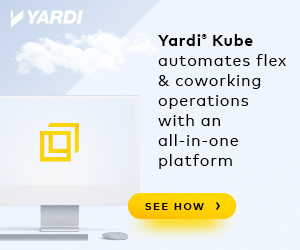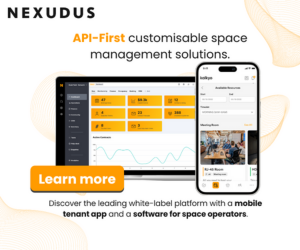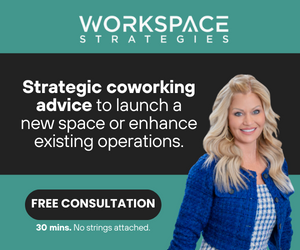- Enhanced work-life balance, improved diversity, equity, and inclusion, and the fostering of communication and collaboration are key advantages of hybrid and remote work models.
- Organizations must address challenges such as supporting middle managers, ensuring transparency, and tailoring hybrid policies to fit diverse work roles and industry demands.
- Investment in productivity-enhancing digital tools, an evolutionary approach to hybrid policies, and recognizing employee successes are crucial for the success of hybrid work models.
The traditional 9-to-5, five days a week in-office work model is being steadily replaced by hybrid and remote work arrangements. This transition is not a transient change, rather a substantial evolution in our work culture. It’s a move that’s reshaping the organizational landscape, bringing with it countless benefits and challenges for company leadership.
I delved into the intricacies of this transition through insightful dialogues with three industry leaders: Nino Cornish, Director of Human Resources at eCore, Evelyn Lee, Head of Workplace Strategy and Innovation at Slack, and Bryan Porcher, Head of Workplace and Real Estate at Next Insurance.
Reaping the Rewards of Hybrid and Remote Work
One of the most salient points that emerged from the discussions is the consensus on the myriad benefits of flexible work models, but it’s most fascinating that different companies elicit unique benefits from the same frameworks.
Cornish explained how hybrid and remote work models foster enhanced work-life balance, focused concentration, and significant savings in commute time and costs. These advantages ripple through the organization, creating a conducive environment for attracting and retaining talent, thereby reducing turnover and driving profitability.
These advantages ripple through the organization, creating a conducive environment for attracting and retaining talent, thereby reducing turnover and driving profitability.
Lee highlighted the potential of hybrid models in fortifying diversity, equity, and inclusion initiatives. By transcending the geographical constraints of a traditional office, companies unlock doors to a broader, more diverse talent pool. This inclusivity extends to historically underrepresented groups and working parents, fostering a more inclusive and equitable workplace.
Porcher underscored the essence of “community, communication, and collaboration” that a well-structured hybrid model can nurture within an organization. Bringing people together regularly not only builds a strong community but also facilitates seamless communication and sparks the kind of innovation that often stems from in-person interactions.
Addressing Challenges in Hybrid and Remote Work Models
The transition to hybrid and remote work models is not without its set of challenges. All three leaders acknowledge the hurdles that organizations need to navigate to make this transition successful.
A primary hurdle, Lee stressed, is the growing need to better support middle managers as they venture into the relatively uncharted territory of leading distributed teams. She also highlighted the necessity for transparency in the workplace.
Customizing hybrid policies to fit the unique demands of different roles within an industry is key, Porcher said. He shared how his company has crafted its hybrid policy with a keen eye on the diversity of work roles, creating a flexible framework that caters to the varying needs of different departments.
A standout insight was the significance of leading by example to foster a successful hybrid work culture. Porcher shared how the leaders at his company, including the executives, model the collaborative in-office behavior they wish to promote, thereby aligning actions with expectations.
This leadership lens sets a tone of authenticity and commitment, creating a ripple effect that encourages the entire organization to align with the hybrid work plans.
Technology, Transparency, Adaptation
The digital realm forms the backbone of successful hybrid and remote work models, making digital tools the key to foster collaboration among distributed teams. Lee pointed out a stark statistic: only 23% of companies are currently channeling investments into productivity-enhancing technology.
The lack of investment in the right digital tools could stymie the potential benefits of hybrid work models, making this a crucial area of focus for organizations aiming to thrive in the new normal.
There are dramatic benefits to taking an evolutionary approach to hybrid work models.
There are dramatic benefits to taking an evolutionary approach to hybrid work models. Porcher shared that while his company currently mandates two office days, there’s anticipation of a gradual increase based on evolving business needs.
This evolutionary approach, characterized by careful iteration and responsiveness to changing circumstances, emerges as a pragmatic strategy for navigating the complex landscape of hybrid work.
Another effective strategy is deliberate recognition to boost engagement and reinforce the value of hybrid work initiatives. Celebrating employee successes, whether through peer recognition programs or other hybrid initiatives, helps cement the culture of hybrid work, making it a valued aspect of the organizational ethos.
The Cognitive Undercurrent: How Biases Shape Our Work Models
As we traverse the terrain of hybrid and remote work, it’s imperative to acknowledge the cognitive biases that subtly influence organizational decisions and individual preferences. Two such biases — the status quo bias and anchoring bias, play significant roles in how companies and employees navigate the shift to new work models.
The status quo bias, a preference for maintaining current states or adhering to previous decisions, can impede the transition to hybrid work models. Leaders and employees alike may cling to traditional work arrangements, viewing them as a safer or more reliable option, even in the face of compelling evidence showcasing the benefits of hybrid or remote work.
Conversely, the anchoring bias, which occurs when individuals overly rely on the first piece of information they encounter when making decisions, can also sway organizational strategies.
For instance, if a company’s initial experiences with remote work during the pandemic were negative, this could anchor their perception and lead to a reluctance in adopting hybrid work models, despite the potential long-term benefits.
Conclusion
These insights offer a roadmap for organizations keen on fostering a flexible, inclusive, and collaborative work culture in the post-pandemic era.
Through a blend of thoughtful leadership, judicious adoption of digital tools, and an evolutionary approach to policy-making, organizations can adapt to the new normal and become poised for success and growth.
Indeed, these are the kinds of points I highlight when I advise leaders about adapting their organizations to hybrid work models.

 Dr. Gleb Tsipursky – The Office Whisperer
Dr. Gleb Tsipursky – The Office Whisperer Cat Johnson – Coworking Marketing Maven
Cat Johnson – Coworking Marketing Maven Angela Howard – Culture Expert
Angela Howard – Culture Expert Drew Jones – Design & Innovation
Drew Jones – Design & Innovation Andrea Pirrotti-Dranchak – Competitive Advantage
Andrea Pirrotti-Dranchak – Competitive Advantage Jonathan Price – CRE & Flex Expert
Jonathan Price – CRE & Flex Expert Jeremy Fennema – Tech Innovation Alchemist
Jeremy Fennema – Tech Innovation Alchemist







